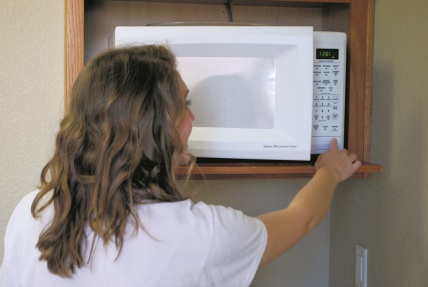 Several UA residence halls have received an Energy Star rating for energy efficiency this year.
Several UA residence halls have received an Energy Star rating for energy efficiency this year.
Energy Star is a government-backed program that helps businesses and institutions achieve premium efficiency across the board. The Riverside and Lakeside residential communities are the first dormitory facilities in the state to receive this rating.
Alicia Browne, associate director for information and communication with housing and residential communities, said energy efficiency has been a long-term goal for HRC and that the buildings were designed with energy efficiency in mind.
“Energy efficiency is important to the University…because we want to be good stewards of our resources, both financial and environmental,” Browne said. “Any way in which we can use resources more wisely and save money benefits our entire housing system and our residents… I think that we at the University are reflecting our students’ interests in wanting to use less energy and help the environment. It’s a win-win situation when we use less energy.”
Some students agree that energy conservation is important for campus housing facilities. Elizabeth Junkin, a senior majoring in chemical engineering, said she is glad the University is working to make housing “green.”
“Energy conservation…helps better the world we live in as well as saves money,” Junkin said. “The latter would especially be important for college dorms because it could help cut the cost of living in the dorms, which would help financially struggling students. I’m glad I live in a relatively ‘green’ facility because it lets me know that the dorms are doing something that could better the world for upcoming generations.”
Browne said that regular maintenance, student-led energy conservation campaigns and centralized gas-fired hot water boilers have been key to the buildings’ energy efficiency. In addition, other dorm buildings have received new cooling towers, pumps and speed drives to help conserve energy through their cooling systems.
The Energy Star rating is calculated using at least 12 months of utility bills, Browne said. The building’s energy consumption information is entered into a computer program, which considers the building’s size, computer use and local climate before comparing it with others nationwide. A building with a score of at least 75 on a scale of one to 100 receives the Energy Star rating. The facilities located on campus received scores of 85, meaning they outperformed 85 percent of buildings in the country.
Natalie Hallmark, a junior psychology major who lives in Riverside, said she is proud the University has done so much to improve energy efficiency.
“I’m proud that UA is trying to be ‘green’ and that my dorm received the rating,” Hallmark said. “Every effort of conservation makes a difference. A few small steps by a lot of people can equal big change.”
Browne said students can save energy on campus just like they would at their own home or apartment by simply turning off lights, unplugging unused appliances and being conscious of water use.
Courtney Belcher, a sophomore majoring in business, said that simple habits like this were important for college students to develop.
“Energy is especially important in the dorms because the good or bad habits we make in college will effect us for the rest of our lives,” Belcher said. “Recycling is so readily available — why not take an extra minute to separate trash and recycle, turn off lights when you leave or open blinds instead of using overhead lights? Easy things like that can make a big difference.” For more information on Energy Star and qualifications to achieve a rating from the program, visit energystar.gov.







